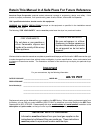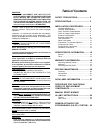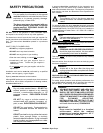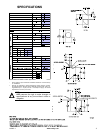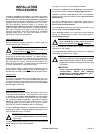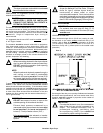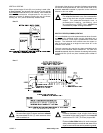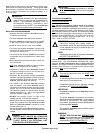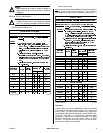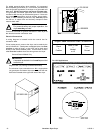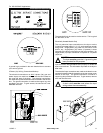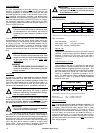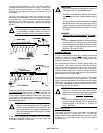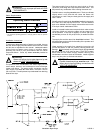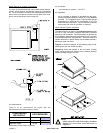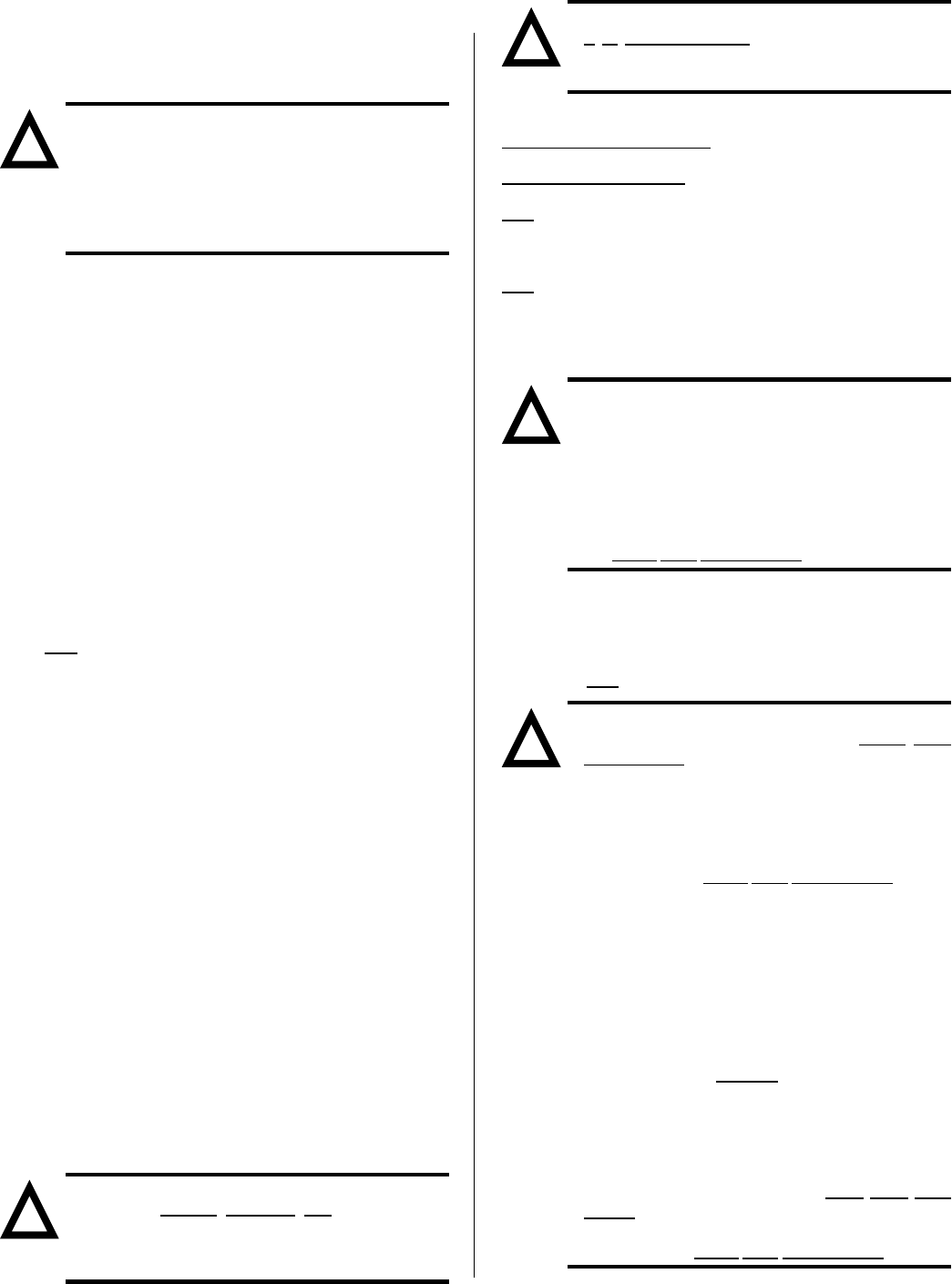
8 American Dryer Corp. 113243-1
Illus. C (refer to the previous page) shows the minimum cross
section area for multiple dryer venting. These figures must
be increased in proportion if the main duct run from the last
dryer to where it exhausts has numerous elbows or is
unusually long.
IMPORTANT:
For extended ductwork runs, the cross section
area of the duct can only be increased to an
extent. For extended ductwork runs, a
professional heating, ventilating, and
air-conditioning (HVAC) firm should be
consulted for proper venting information.
IMPORTANT VENTING REMINDERS
Ductwork size and installation should be done by
a qualified professional.
The dryer must be exhausted to the outdoors.
Ductwork should be routed as short as possible
to the outdoors with as few elbows as possible.
Avoid 90° turns, use 30° or 45° turns instead.
The size of the ductwork must be a minimum of 8-
inches (20.32 cm) for horizontal runs and 10-inches
(25.4 cm) for vertical runs.
The inside of the ductwork should be as smooth
as possible with no projections from sheet metal
screws.
Ducts added should overlap the duct to which it is
to be connected.
ALL ducts should be taped to prevent moisture
and lint from escaping into the building.
Inspection or clean out doors should be installed
throughout strategic points in the ductwork for
periodic inspection and cleaning.
Whenever the duct passes through combustible
materials, the opening must be 2-inches (5.08 cm)
larger than the duct (all the way around). The duct
must be centered within this opening.
The outside of the ductwork must be protected
from the weather. A 90° elbow must be used for
horizontal run and when vertically through a roof by
using a 180° turn to point the opening downward.
The distance between the exhaust duct and the
nearest obstruction (i.e., roof or ground) must be
twice the diameter of the duct.
DO NOT use screens, louvers, or caps on the
outside opening of the exhaust ductwork.
Exhaust back pressure measured by a manometer
at the dryer exhaust duct area must be no less
than 0 and must not exceed 0.3 inches (0.74 mb)
of water column (W.C.).
Exhaust ductwork outlets should not be located in
an area directly where make-up air openings are
located.
WARNING:
DRYER MUST NEVER BE OPERATED
WITHOUT THE LINT FILTER/SCREEN IN
PLACE, EVEN IF AN EXTERNAL LINT
COLLECTION SYSTEM IS USED.
IMPORTANT:
It is recommended that exhaust or booster
fans not be used in the exhaust ductwork
system.
ELECTRICAL INFORMATION
Electrical Requirements
ALL electrical connections must be made by a properly
licensed and competent electrician. This is to ensure that
the electrical installation is adequate and conforms to local
and state regulations or codes. In the absence of such codes,
ALL electrical connections, materials, and workmanship must
conform to the applicable requirements of the National
Electrical Code ANSI/NFPA NO. 70-LATEST EDITION or in
Canada, the Canadian Electrical Codes Parts 1 & 2 CSA
C22.1-1990 or LATEST EDITION.
IMPORTANT:
Failure to comply with these codes or
ordinances, and/or the requirements stipulated
in this manual can result in personal injury or
component failure.
NOTE:
Component failure due to improper installation
will VOID THE WARRANTY.
Each dryer should be connected to an independently protected
branch circuit. The dryer must be connected with copper
wire only. DO NOT use aluminum wire; it could create a fire
hazard. The copper conductor wire/cable must be of proper
ampacity and insulation in accordance with electric codes
for making
ALL service connections.
NOTE:
The use of aluminum wire will VOID THE
WARRANTY.
An individual ground circuit must be provided to
each dryer, do not daisy chain.
Component failure due to improper voltage
application will VOID THE WARRANTY.
IMPORTANT:
A separate protected circuit must be provided
to each dryer.
The dryer must be connected to the electric
supply shown on the data label. In the case of
208 VAC or 230/240 VAC, the supply voltage
must match the electric service specifications
of the data label exactly.
The wire size must be properly sized to handle
the related current.
WARNING:
208 VAC AND 230/240 VAC ARE NOT THE
SAME. Any damage done to dryer components
due to improper voltage connections will
automatically VOID THE WARRANTY.
!
!
!
!
!



